Discover the Enchantment of Penglai Pavilion: A Journey Through History and Legends
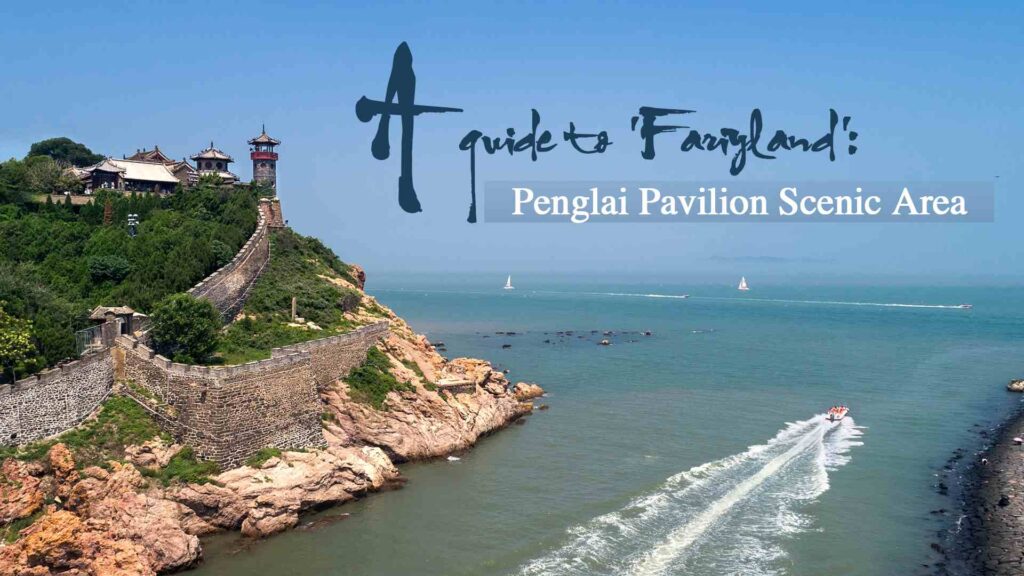
An Essential Guide to Visiting Penglai Pavilion
In This Guide
- An Essential Guide to Visiting Penglai Pavilion
- The Rich History and Legends of Penglai Pavilion
- Main Highlights: What You Absolutely Can’t Miss
- Planning Your Visit: A Practical Guide
- Tickets: Prices, Booking, and Tips
- How to Get There: A Complete Transportation Guide
- Local Cuisine and Accommodation Nearby
- Frequently Asked Questions
- Final Thoughts on Your Trip
When you step into the enchanting realm of Penglai Pavilion (烟台蓬莱阁), you are not merely visiting a site; you are embarking on a journey through the annals of Chinese history and mythology. Nestled along the stunning coastline of Shandong Province, this iconic structure is steeped in tales of immortality, maritime legend, and ancient military strategy.
Originally built in 1061 during the Northern Song Dynasty, the pavilion has stood the test of time, blending architectural elegance with breathtaking natural beauty. Perched atop the cliffs overlooking the Bohai Sea, it offers a panoramic view that has inspired poets and artists for centuries. The site is not just a visual feast; it is a cultural landmark where the legendary Eight Immortals are said to have sailed out to sea, seeking eternal life. This connection to mythology adds a layer of wonder that captivates visitors from around the world.
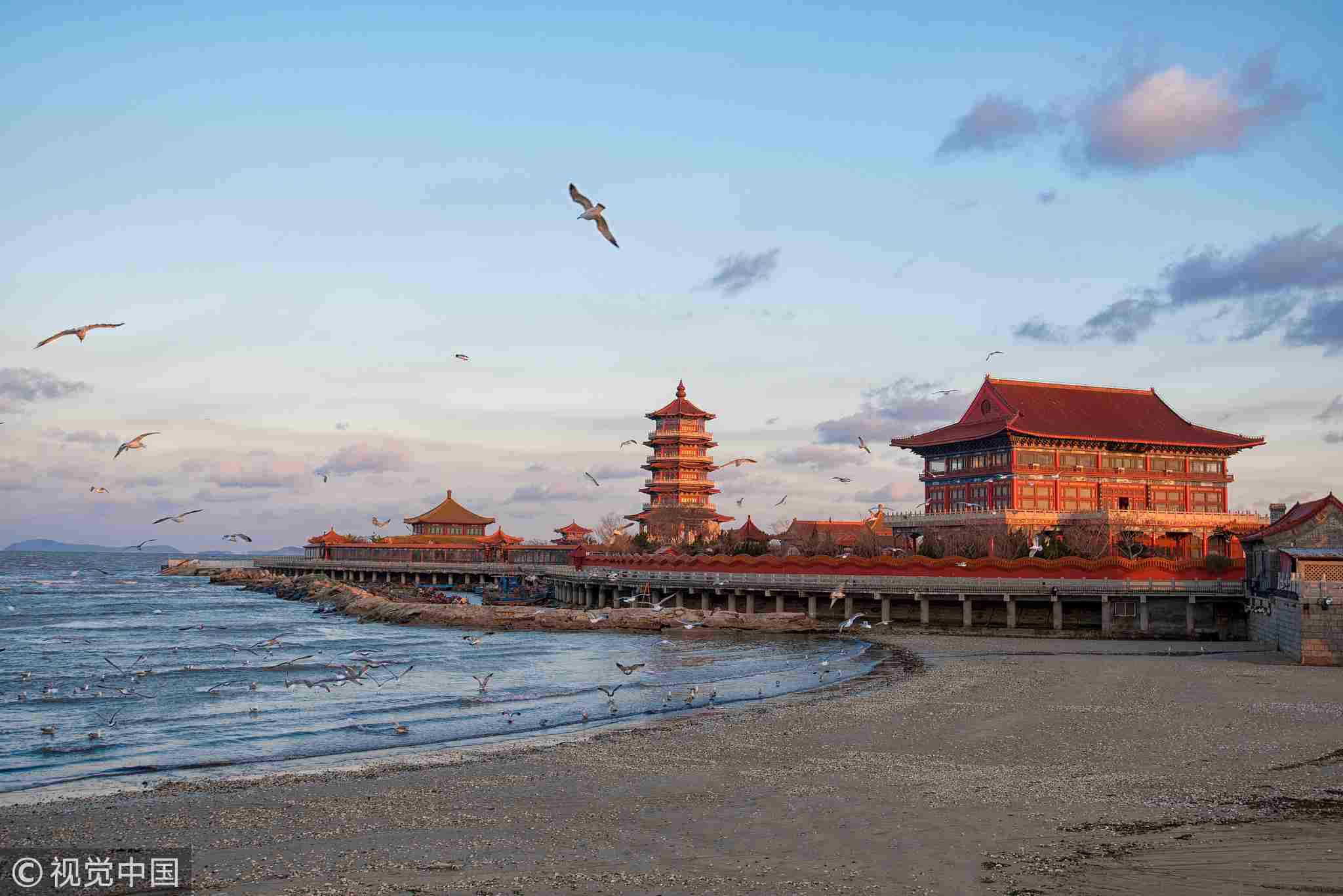
Penglai Pavilion.
As you explore the pavilion and its surrounding historical monuments, take time to absorb the intricate carvings, vibrant statues, and lush gardens. Your adventure will reveal not only the architectural mastery of ancient China but also its rich tapestry of beliefs and traditions.
Whether you are a history buff, a culture enthusiast, or simply in search of stunning vistas, visiting Penglai Pavilion promises a memorable experience that bridges the past with the present. Here’s everything you need to know to make the most of your visit.
The Rich History and Legends of Penglai Pavilion
Nestled along the stunning coastline of Shandong province, Penglai Pavilion (蓬莱阁) stands not only as an architectural marvel but also as a significant emblem of Chinese history and mythology. With its breathtaking views over the Bohai Sea and its deep-rooted tales, this site offers a rich tapestry of cultural heritage that beckons travelers seeking to delve into China’s storied past.

Penglai Pavilion.
A Historical Overview
The origins of Penglai Pavilion can be traced back to the Tang Dynasty (618-907 AD), but its current structure was built during the Ming Dynasty (1368-1644), around 1600 AD. It was initially constructed as a watchtower and a military fortress, strategically positioned to guard the coast against pirate invasions. The pavilion served as a lookout for the imperial fleet, which was critical during the turbulent maritime conflicts of the time.
Penglai Pavilion is part of the larger Penglai Water City (水城), a fortified harbor established in 1376. This remarkable site was among China’s earliest military ports, facilitating both trade and defense. The city has recently undergone renovations to restore its historical significance, promising a glimpse into its grandeur during the Ming Dynasty.
The Legends and Myths
Penglai Pavilion is steeped in Chinese folklore, most notably the legend of the Eight Immortals (八仙), who are revered figures in Daoist mythology. According to legend, these immortals embarked on a journey from the Red Cliffs (丹崖) adjacent to Penglai, setting sail across the ocean in search of paradise. This tale not only captivates the imagination but also intertwines with the natural phenomena that can be witnessed from the pavilion – the mysterious mirages that appear on the horizon during May and June.
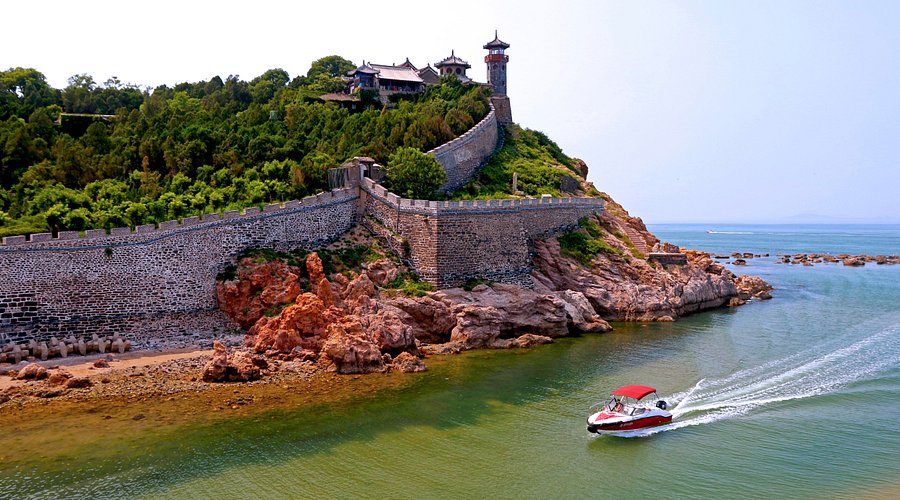
Penglai Pavilion.
These mirages, which create the illusion of distant islands and landscapes, have been interpreted as the mythical realm where the Eight Immortals reside. Such phenomena add an enchanting layer to the pavilion’s allure, making it a favored spot for both tourists and spiritual seekers alike.
The Quest for Immortality
The connection between Penglai and the quest for immortality dates back to the legendary Emperor Qin Shi Huang (259-210 BC), who famously sought the elixir of life. Historical texts recount his journey to Penglai in hopes of finding the fabled potion that would grant him eternal life. Similarly, Emperor Han Wu Di (156-87 BC) was drawn to this mystical area for the same purpose. The enchanting landscape and the legends surrounding it made Penglai a focal point for those seeking transcendence from the mortal realm.
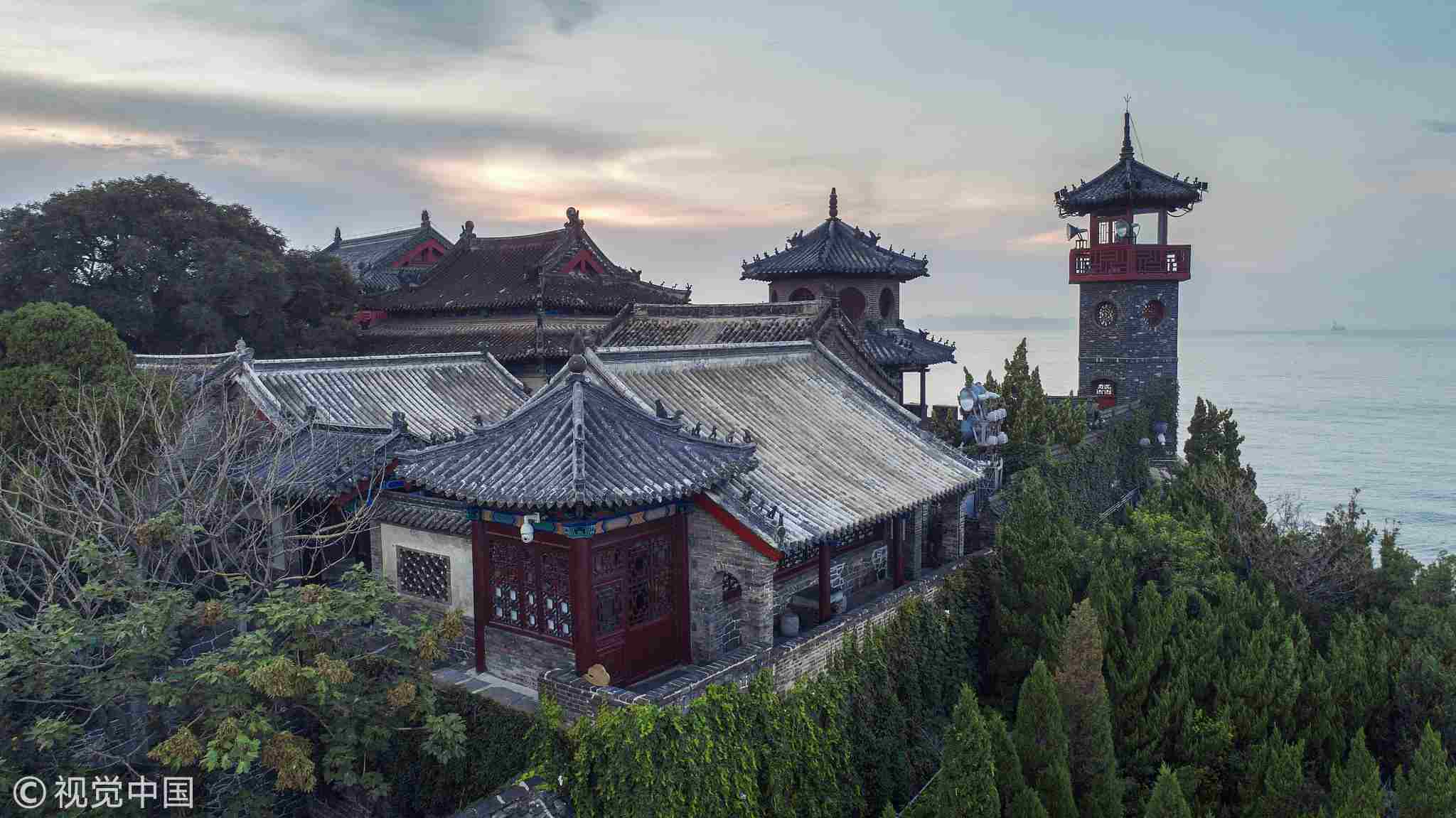
Penglai Pavilion.
Architectural Beauty and Cultural Significance
Penglai Pavilion is a stunning example of traditional Chinese architecture, characterized by its elegant eaves, intricate carvings, and vibrant colors. The pavilion, perched atop a cliff, offers panoramic views of the surrounding sea and the distant horizon, creating a breathtaking backdrop for visitors. Its cultural significance is further enhanced by the numerous temples and statues that populate the area, each telling their own stories of gods and mythical beings.
Visitors can wander through ancient trees and courtyards, exploring the rich history that permeates this site. The vibrant colors of the statues, depicting various deities and legendary figures, provide a visual feast that complements the historical narrative.
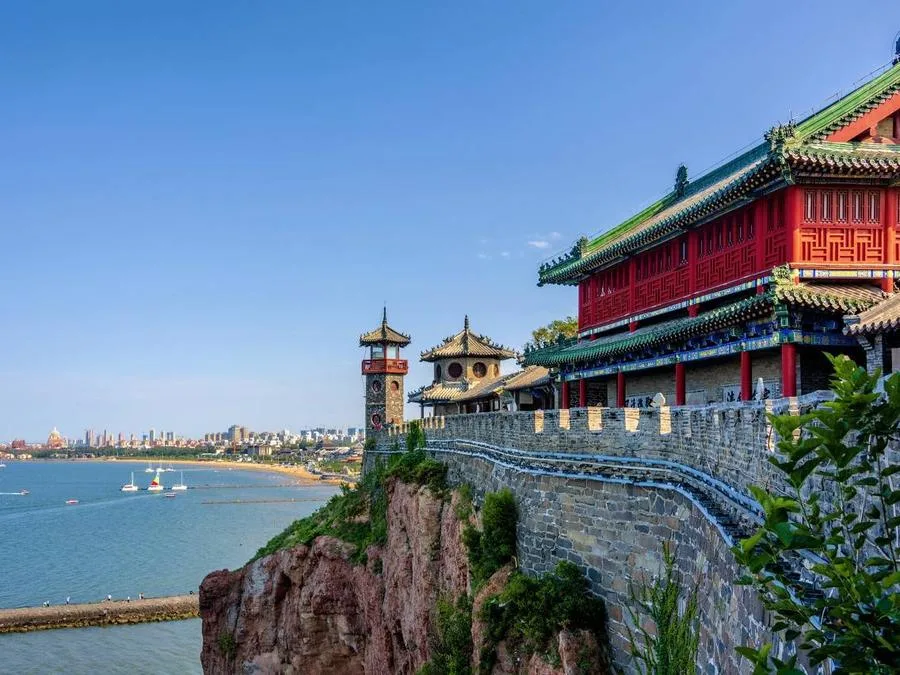
Penglai Pavilion.
Conclusion
Penglai Pavilion is not merely a tourist destination; it is a portal into the heart of Chinese history and mythology. Whether you are captivated by the architectural beauty, the legends of immortals, or the enchanting natural phenomena, Penglai Pavilion invites you to explore a world where history and legend intertwine. For international travelers seeking an authentic experience of Chinese culture, a visit to Penglai Pavilion is an unforgettable journey into the depth of China’s rich heritage.
Main Highlights: What You Absolutely Can’t Miss
Discovering the Wonders of Penglai Pavilion
When visiting the enchanting Penglai Pavilion, a UNESCO World Heritage site steeped in history and myth, there are several highlights that you absolutely cannot miss. This coastal gem in Shandong province not only offers breathtaking views but also immerses you in the rich tapestry of Chinese culture and folklore.
1. The Majestic Penglai Pavilion (蓬莱阁)
-
Historical Significance: Built in 1061 during the Song Dynasty, the Penglai Pavilion is a masterpiece of ancient architecture and one of the “Four Great Towers” of China. Its strategic position on a cliff offers a panoramic view of the Bohai Sea, where the legendary Eight Immortals are said to have ascended to paradise.
-
Architectural Marvel: The pavilion’s intricate wooden structure, adorned with colorful carvings and beautiful inscriptions, reflects the craftsmanship of ancient artisans. As you ascend the steps, take a moment to appreciate the harmonious blend of nature and architecture.
-
Stunning Views: From the top, the vistas are nothing short of spectacular. On clear days, the horizon stretches endlessly, and you might even witness the famous mirages for which Penglai is renowned.
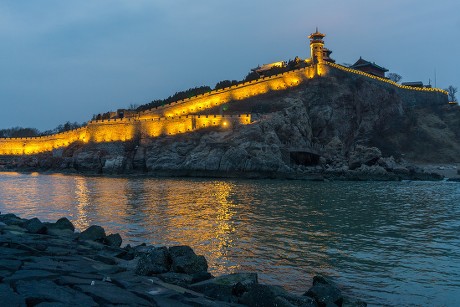
Penglai Pavilion.
2. The Eight Immortals’ Legend
-
Cultural Importance: The story of the Eight Immortals, who are believed to have set sail from the Red Cliffs (丹崖) nearby, is a significant part of local lore. As you explore, look for statues and paintings that depict this enchanting tale, which has inspired countless works of art and literature.
-
Mirage Phenomena: Between May and June, the waters off Penglai often reveal mysterious mirages that appear as distant islands. Witnessing this phenomenon adds a mystical layer to your visit, as ancient texts have described similar sights as divine blessings.
3. Penglai Water City (水城)
-
Historical Fortification: Dating back to 1376, this ancient military port was once a crucial harbor for imperial war junks. Walk along the reconstructed ramparts and imagine the bustling activity of ancient naval fleets.
-
Scenic Walks: The plank walk along the cliffs offers a picturesque route where you can enjoy the coastal scenery and perhaps spot seabirds soaring above the waves.
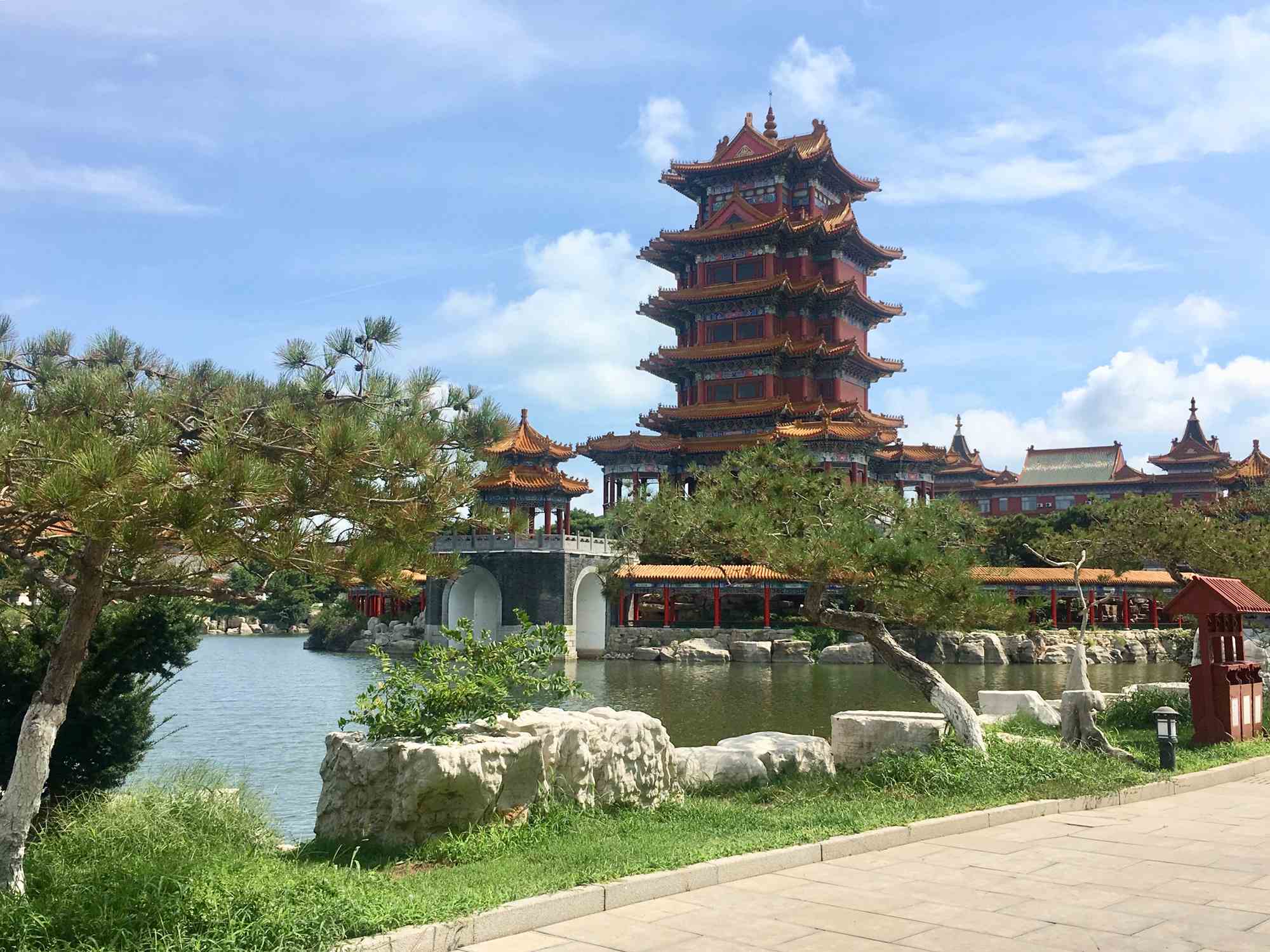
Penglai Pavilion.
4. Temples and Cultural Relics
-
Daoist Temples: Along your journey to the pavilion, you’ll encounter several Daoist temples, each adorned with colorful statues of gods and mythical figures. These sacred spaces provide insight into the spiritual heritage of the region.
-
Cultural Insights: Engage with the local guides who may share fascinating stories about the temples and their significance in Chinese culture, including rituals that have been practiced for centuries.
5. Local Cuisine and Refreshments
-
Dining Options: Although dining options within the main attractions may be limited, there are eateries nearby that serve local delicacies. Be sure to sample Penglai’s famous seafood dishes, including fresh fish and shrimp, which reflect the coastal bounty of the region.
-
Snacks and Souvenirs: After a day of exploration, treat yourself to local snacks available at various stalls, from savory buns to sweet treats. Don’t forget to pick up souvenirs that celebrate the rich history and folklore of Penglai.
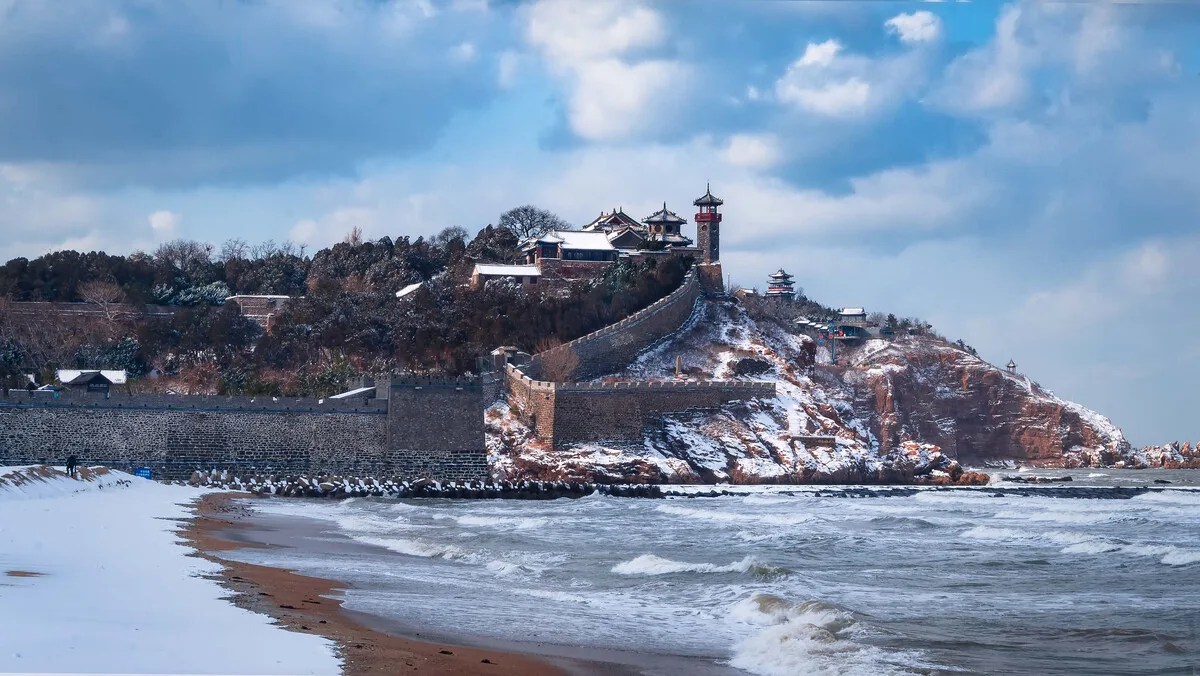
Penglai Pavilion.
6. Practical Tips for Visitors
-
Plan Your Visit: Given that the area involves some uphill walking, it’s advisable to wear comfortable shoes and carry water. If possible, visit during the early morning or late afternoon to avoid the peak crowds and enjoy the cooler temperatures.
-
Transportation: If you’re coming from nearby cities like Yantai or Weihai, buses are readily available, but consider arranging a private car for more comfort and flexibility.
Exploring Penglai Pavilion is not just a visit to a historical site; it’s an opportunity to step into a world where myths and reality intertwine, surrounded by breathtaking landscapes and rich traditions. Don’t miss out on the chance to create unforgettable memories in this magical destination.
Planning Your Visit: A Practical Guide
Essential Information for Your Visit to Penglai Pavilion
Visiting the enchanting Penglai Pavilion (烟台蓬莱阁旅游区) offers a unique glimpse into China’s rich history and mythological lore. This guide will help you navigate your journey to one of the most iconic landmarks in Shandong Province, ensuring an enriching experience steeped in culture and natural beauty.

Penglai Pavilion.
Getting There
Location:
Penglai Pavilion is situated in the city of Penglai, Shandong Province, about 55 miles from Yantai.
Transportation Options:
– By Bus: Regular buses from Yantai take approximately two hours, making it a convenient day-trip option. Ensure to book a round-trip ticket.
– By Car: Renting a car offers flexibility. Follow the G18 highway towards Penglai, and look for signs to the pavilion.
– Taxis and Ride-Sharing: Available from major cities nearby, but be prepared for potentially higher costs.
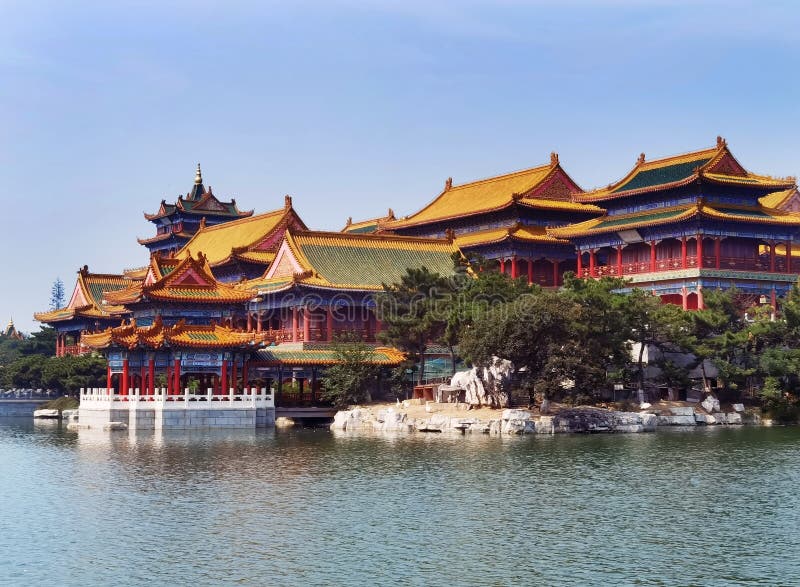
Penglai Pavilion.
Tickets and Opening Hours
Admission Fees:
Entry to the pavilion is typically around 50 yuan, although seniors may qualify for discounts or free admission. Always carry your passport for identification.
Opening Hours:
The pavilion is open 24 hours a day, but it’s best to visit during daylight for optimal views and photography opportunities.
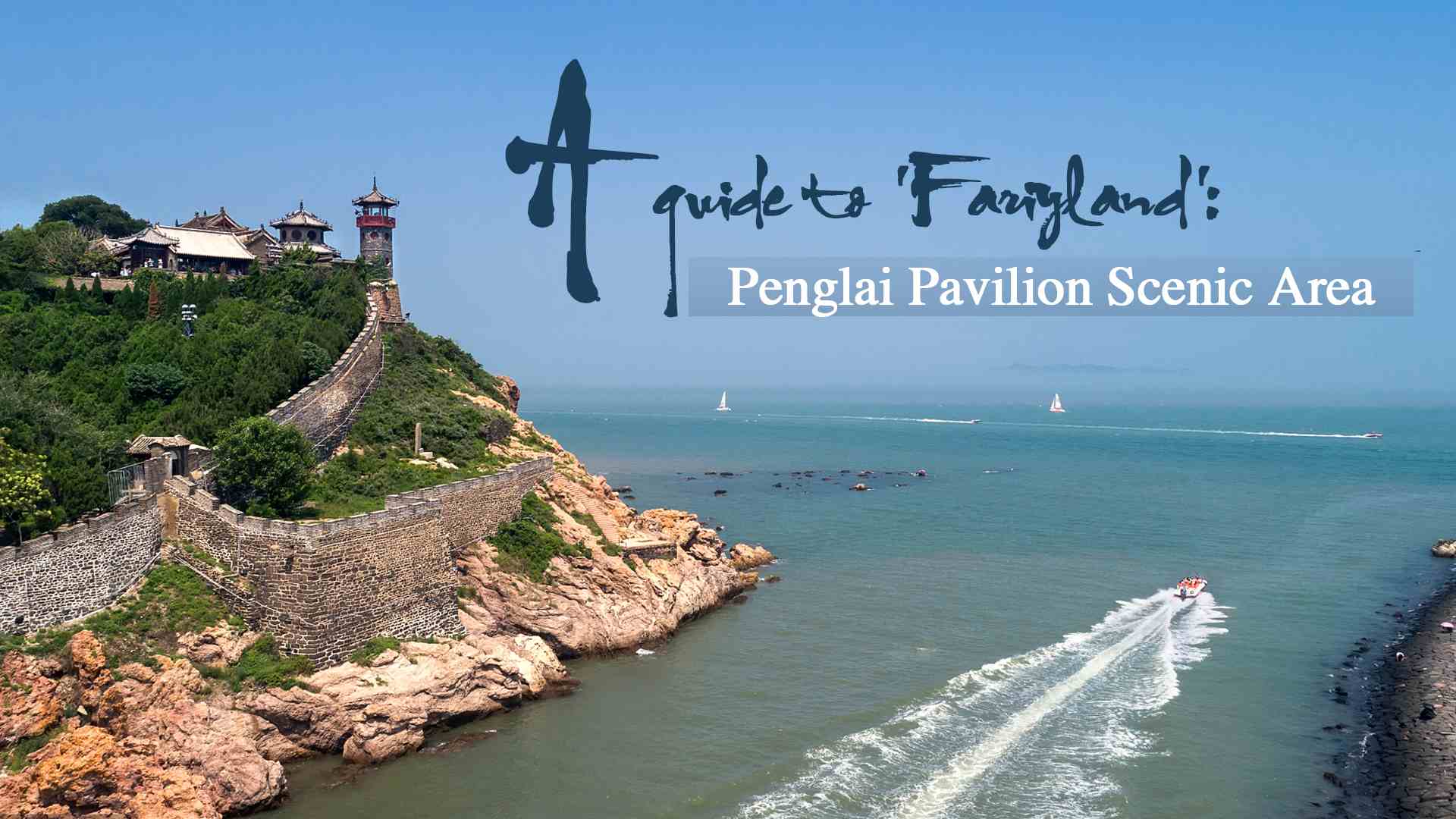
Penglai Pavilion.
What to Expect
Historical Significance:
Penglai Pavilion is not just a stunning architectural marvel; it is steeped in legend. According to folklore, it is the mythical departure point for the Eight Immortals, who are said to have floated over the sea from the Red Cliffs (丹崖).
Scenic Views:
As you ascend the cliffs, prepare for breathtaking vistas of the Bohai Sea and the surrounding coastal landscape. Be sure to bring your camera!
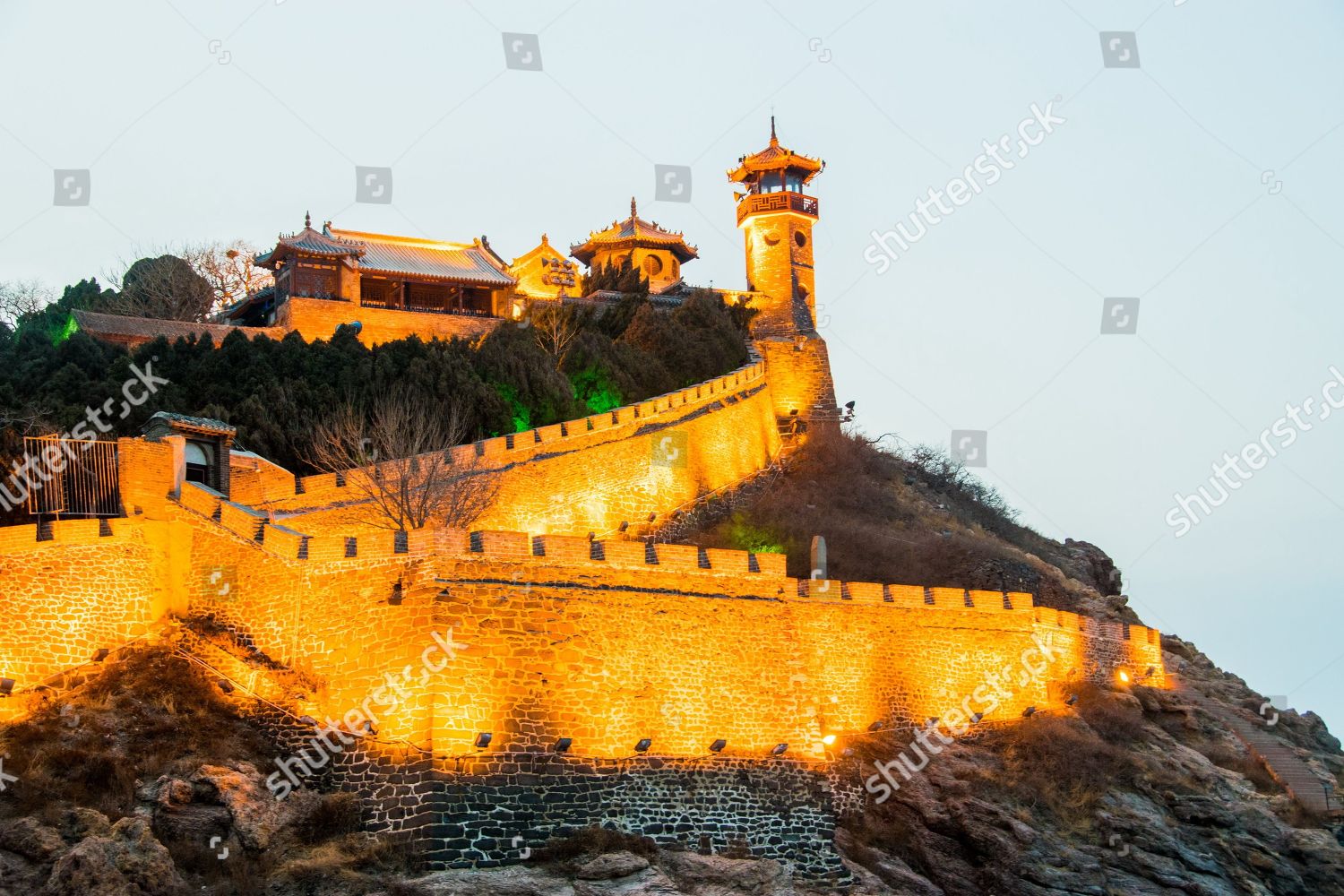
Penglai Pavilion.
Mirage Phenomena:
During certain times of the year (notably May and June), you may witness the mesmerizing sea mirages that have captivated visitors for centuries. These illusions create the appearance of distant islands and landscapes, enhancing the mystical allure of the area.
Planning Your Day
Suggested Itinerary:
1. Morning Arrival: Aim to arrive early to beat the crowds and enjoy the serenity of the pavilion.
2. Explore the Surroundings: Begin with a walk along the cliffside plank walk for stunning views.
3. Visit the Daoist Temples: Take time to explore the nearby temples adorned with colorful statues and rich symbolism.
4. Lunch Options: Be mindful of the limited dining options. Consider packing snacks or checking out the local restaurants upon arrival. Many visitors have found the on-site food stalls limited and overpriced.
5. Enjoy the Pavilion: Ascend to the top of the pavilion for panoramic views, and delve into the history presented in the informative displays.
Tips for a Smooth Visit
- Dress Comfortably: The walk to the pavilion can be steep. Comfortable walking shoes are a must.
- Stay Hydrated: Bring water, especially if you’re visiting during warmer months.
- Cash is King: While some areas may accept cards, carrying cash (yuan) is advisable for smaller purchases and local vendors.
- Respect Local Customs: When visiting temples, be respectful of ongoing ceremonies and traditions.
Conclusion
Penglai Pavilion is more than just a historical site; it is a portal into the myths and legends of ancient China. By planning ahead and immersing yourself in its rich cultural tapestry, you will undoubtedly leave with unforgettable memories and a deeper appreciation of Chinese heritage. Enjoy your journey to this enchanting destination!
Tickets: Prices, Booking, and Tips
When planning your visit to the breathtaking Penglai Pavilion, understanding the ticketing process is essential for an enjoyable experience. Here’s a comprehensive guide on prices, booking options, and handy tips to enhance your journey.
Ticket Prices
- General Admission: The entry fee for adults is approximately 80 yuan. This ticket allows access to the main attractions within the Penglai Pavilion area.
- Senior Citizens: Visitors aged 70 and above can enjoy free admission upon presentation of a valid ID, making it a fantastic option for older travelers.
- Children and Students: Reduced prices are often available for children and students, typically ranging from 40-50 yuan. Be sure to carry student identification to avail of these discounts.
- Tour Packages: Many local tour operators offer packages that include transportation, guided tours, and meals. Prices vary, but expect to pay around 200-300 yuan for a day trip from nearby cities like Yantai or Weihai.
Booking Options
- Online Reservations: To streamline your visit, consider booking tickets online through popular travel platforms. This can help you avoid long queues at the entrance.
- On-Site Purchase: Tickets can also be purchased directly at the Pavilion. However, during peak tourist seasons, you may encounter long wait times.
- Tour Operators: If you prefer a guided experience, numerous local tour companies provide comprehensive packages that include transportation and entry fees. It’s advisable to book in advance, especially during weekends and holidays.
Tips for a Seamless Visit
- Plan Your Visit: The Pavilion is open year-round, from 12:00 AM to 11:59 PM. However, visiting during the early morning or late afternoon can help you avoid crowds and enjoy more serene views.
- Dress Comfortably: The journey involves a bit of uphill walking, so wear comfortable shoes. The paths may also be uneven in some areas, so be prepared.
- Pack Snacks: While there are food stalls available, options may be limited and prices can be inflated. Bringing along snacks and water can enhance your comfort during your visit.
- Explore Beyond the Pavilion: Don’t miss the surrounding attractions, such as the historical Penglai Water City and the stunning cliffside plank walk. Plan to spend a full day to soak in all the beauty and history.
- Be Mindful of Lunch Options: If you’re on a guided tour, be aware that lunch arrangements may not be well-structured. Make inquiries in advance or carry some provisions to avoid hunger pangs.
By understanding ticket prices, booking options, and planning ahead, you can make the most of your visit to Penglai Pavilion. This iconic site, steeped in history and surrounded by natural beauty, promises a memorable experience for any traveler interested in China’s rich cultural heritage.
How to Get There: A Complete Transportation Guide
Getting to Penglai Pavilion: Your Essential Transportation Guide
Penglai Pavilion (烟台蓬莱阁) is a stunning historical site situated in Shandong Province, known for its breathtaking views and rich cultural heritage. Whether you are traveling from nearby cities or further afield, navigating your way to this remarkable destination can be straightforward with the right information. Here’s a comprehensive guide to help you reach Penglai Pavilion with ease.
1. Traveling by Air**
The closest major airport to Penglai is Yantai Penglai International Airport (YNT), located approximately 30 kilometers from the pavilion. Here’s how to make the most of your journey:
- Direct Flights: Check airlines that offer direct flights to Yantai from major cities like Beijing, Shanghai, and Guangzhou.
- Airport Transfers: Upon arrival, you can take a taxi or arrange for a shuttle service to Penglai. The journey by taxi typically takes around 30 minutes.
2. Train Travel**
For those who prefer train travel, Yantai Railway Station is the nearest railway hub, offering various routes from cities across China:
- High-Speed Trains: Opt for high-speed trains (G trains) that connect major cities like Beijing and Shanghai to Yantai. This is an efficient and comfortable option.
- From Yantai to Penglai: Once at Yantai Railway Station, you can catch a local bus or taxi to Penglai. The distance is about 55 kilometers, and the bus ride takes approximately 1 hour.
3. Bus Services**
Buses present a popular and economical way to reach Penglai:
- From Yantai: Frequent buses run from Yantai Central Bus Station to Penglai. The journey takes about 1 to 1.5 hours. Tickets can be purchased at the station or on-site.
- From Weihai: If you’re coming from Weihai, direct buses are available and take around 2 hours. Make sure to check the schedule in advance.
4. Car Rentals and Taxis**
Renting a car can provide flexibility during your visit:
- Car Rentals: Several car rental agencies operate in Yantai. Booking in advance is recommended, especially during peak tourist seasons.
- Taxis: Taxis are widely available in Yantai and Penglai. Ensure the driver understands your destination, as English may not be widely spoken.
5. Local Transportation in Penglai**
Once you arrive in Penglai, getting around to the pavilion and other attractions is relatively easy:
- Walking: The pavilion is located on a hill, and the walk offers scenic views. Be prepared for a bit of uphill walking, which can be a rewarding experience.
- Electric Cars: For those preferring not to walk, electric cars are available to transport visitors up the hill to the pavilion.
- Bicycles: Renting a bicycle can be a fun way to explore the nearby areas and enjoy the coastal scenery.
Tips for a Smooth Journey
- Plan Ahead: Check local transportation schedules in advance, especially during holidays or weekends when services may be busier.
- Pack Accordingly: If you plan to walk up to the pavilion, wear comfortable shoes and consider bringing water and snacks, as dining options within the site may be limited.
- Cultural Considerations: Be respectful of local customs and traditions while visiting temples and historical sites.
Penglai Pavilion not only offers a glimpse into China’s rich history but also provides a stunning backdrop for unforgettable memories. With this transportation guide, you’ll be well-equipped to embark on your journey to this enchanting destination!
Local Cuisine and Accommodation Nearby
Discovering Culinary Delights and Comfortable Stays Near Penglai Pavilion
When visiting the historic Penglai Pavilion, a journey steeped in myth and breathtaking views, it’s essential to complement your experience with local cuisine and comfortable accommodations. The region around Penglai is not only rich in history but also in flavors, offering a variety of dining options and places to stay.
Local Cuisine
Penglai’s culinary scene is a delightful reflection of Shandong’s gastronomic traditions, known for its fresh seafood and robust flavors. Here are some local favorites you shouldn’t miss:
-
Seafood Dishes: Given its coastal location, Penglai is famous for its seafood. Look for restaurants serving grilled squid, steamed fish, and shellfish dishes. The freshness of the catch elevates these simple preparations into a feast for the senses.
-
Penglai Wine: Don’t forget to sample Penglai’s local wines, especially the sweet white varieties produced from grapes grown in the nearby vineyards. Pairing this with your meal can enhance the dining experience.
-
Shandong Pancakes: Known locally as “Jianbing,” these savory pancakes are a common street food and make for a perfect quick bite. They are often filled with egg, scallions, and a variety of sauces, embodying the region’s culinary spirit.
-
Local Snacks: If you’re in a hurry or looking for a light bite, try sesame buns or pot noodles, found at various stalls near the pavilion. While simple, they can provide a satisfying snack as you explore the area.
For a more substantial meal, consider dining at one of these popular local restaurants:
-
Penglai Seafood Restaurant (蓬莱海鲜餐厅): Renowned for its fresh catch and traditional recipes, this restaurant offers a cozy atmosphere with stunning views of the Bohai Sea. Reservation is recommended during peak tourist seasons.
-
Penglai Pavilion Restaurant (蓬莱阁餐厅): Located within close proximity to the pavilion, this restaurant serves a mix of local specialties and classic Chinese dishes, perfect for refueling after your explorations.
Accommodation Options
Your choice of accommodation can greatly enhance your visit to this culturally rich area. Below are some well-reviewed options that cater to various budgets:
-
Penglai Pavilion Hotel (蓬莱阁酒店): This hotel is conveniently situated near the pavilion, offering comfortable rooms and easy access to nearby attractions. With panoramic views of the sea, it’s an ideal spot for those looking to immerse themselves in the local scenery.
-
Yantai Penglai International Hotel (烟台蓬莱国际酒店): A bit further away but worth considering, this hotel boasts modern amenities, a fitness center, and an onsite restaurant serving both local and international cuisine. Ideal for travelers seeking a touch of luxury.
-
Hostel Options: For budget-conscious travelers, Penglai also has several hostels that offer dormitory-style accommodations. These are great places to meet fellow travelers and share stories about your adventures.
Final Thoughts
As you explore the enchanting Penglai Pavilion, take time to indulge in the local flavors and find a comfortable place to rest. The combination of rich history, stunning vistas, and delectable cuisine will surely create a memorable experience that showcases the best of Chinese culture.
Frequently Asked Questions
Frequently Asked Questions about Penglai Pavilion
1. What is Penglai Pavilion and why is it significant?
Penglai Pavilion, or Penglai Ge, is a historic structure located in the city of Penglai, Shandong Province. It dates back to the Ming Dynasty and is renowned for its stunning views of the Bohai Sea and its connection to Chinese mythology. According to legend, it is the site where the Eight Immortals set off to seek paradise, making it a symbol of longevity and immortality in Chinese culture.
2. How do I get to Penglai Pavilion?
Penglai Pavilion is accessible by various means of transportation:
– By Bus: Regular buses connect Penglai with major cities like Yantai and Weihai.
– By Train: You can take a train to Yantai and then transfer to a bus or taxi.
– By Car: If you prefer driving, the pavilion is well-signposted from major highways.
3. Are there any entrance fees?
Yes, there is an entrance fee to visit Penglai Pavilion. However, discounts may be available for seniors and children. It’s advisable to check in advance for current pricing and any promotions.
4. What are the best times to visit?
The best times to visit Penglai Pavilion are during spring and autumn, when the weather is mild and the scenery is particularly beautiful. Additionally, visiting during May and June offers a chance to witness the unique sea mirages that occur in this region.
5. What should I wear during my visit?
Comfortable walking shoes are highly recommended, as the area involves a fair amount of uphill walking to reach the pavilion. Dress in layers, as temperatures can fluctuate throughout the day, especially near the coast.
6. Are there dining options available on-site?
While there are limited food stalls near the pavilion, options may be scarce during peak hours. To ensure a satisfying experience, consider bringing snacks or checking for local restaurants in the area before your visit. It’s advisable to eat before exploring or plan to dine in the nearby town of Penglai afterward.
7. What can I expect to see at Penglai Pavilion?
Visitors can explore a variety of attractions, including:
– The main pavilion with breathtaking sea views.
– Ancient temples adorned with colorful statues.
– Historical military fortifications.
– Scenic walking paths along the cliffs, offering picturesque views of the coastline.
8. Is Penglai Pavilion suitable for families?
Absolutely! Penglai Pavilion offers a rich cultural experience that can be enjoyed by visitors of all ages. The area is educational, with historical significance and beautiful landscapes, making it a great destination for family outings. However, keep in mind that younger children may need assistance with the more strenuous parts of the walk.
Final Thoughts on Your Trip
As you conclude your journey through the enchanting landscapes and rich history of Penglai Pavilion, you’re left with not just memories but a deep appreciation for the cultural tapestry that this area embodies. Here are some final thoughts to guide you in reflecting on your experience:
Embrace the Mystique of History
Penglai Pavilion stands as a testament to centuries of lore, from its roots in the Ming Dynasty to its status as a military port and mythical haven for the Eight Immortals. Consider how these stories intertwine with the very fabric of Chinese culture, revealing the values and beliefs that have shaped this region.
Marvel at Natural Wonders
Beyond its historical significance, Penglai offers breathtaking views along the Bohai Sea, especially at the cliffs where the pavilion is perched. Witnessing the elusive mirages that occasionally grace the horizon serves as a reminder of nature’s mysteries, inviting you to ponder the magic that surrounds us.
Savor Local Culture
While exploring, take the time to engage with local cuisine and traditions. Though some tours may overlook dining options, the vibrant flavors and dishes available in the area can enhance your experience. Make it a point to seek out local eateries to truly savor the essence of the region.
Reflect and Share
As you prepare to leave Penglai, consider sharing your experiences with fellow travelers or through social media. Your insights can inspire others to embark on their own adventures, discovering the beauty and history that this remarkable destination has to offer.
In closing, your visit to Penglai Pavilion is more than just a day trip; it is a journey into the heart of a place where history, mythology, and natural beauty converge. Carry these experiences with you and let them enrich your understanding of China’s profound cultural heritage. Safe travels!